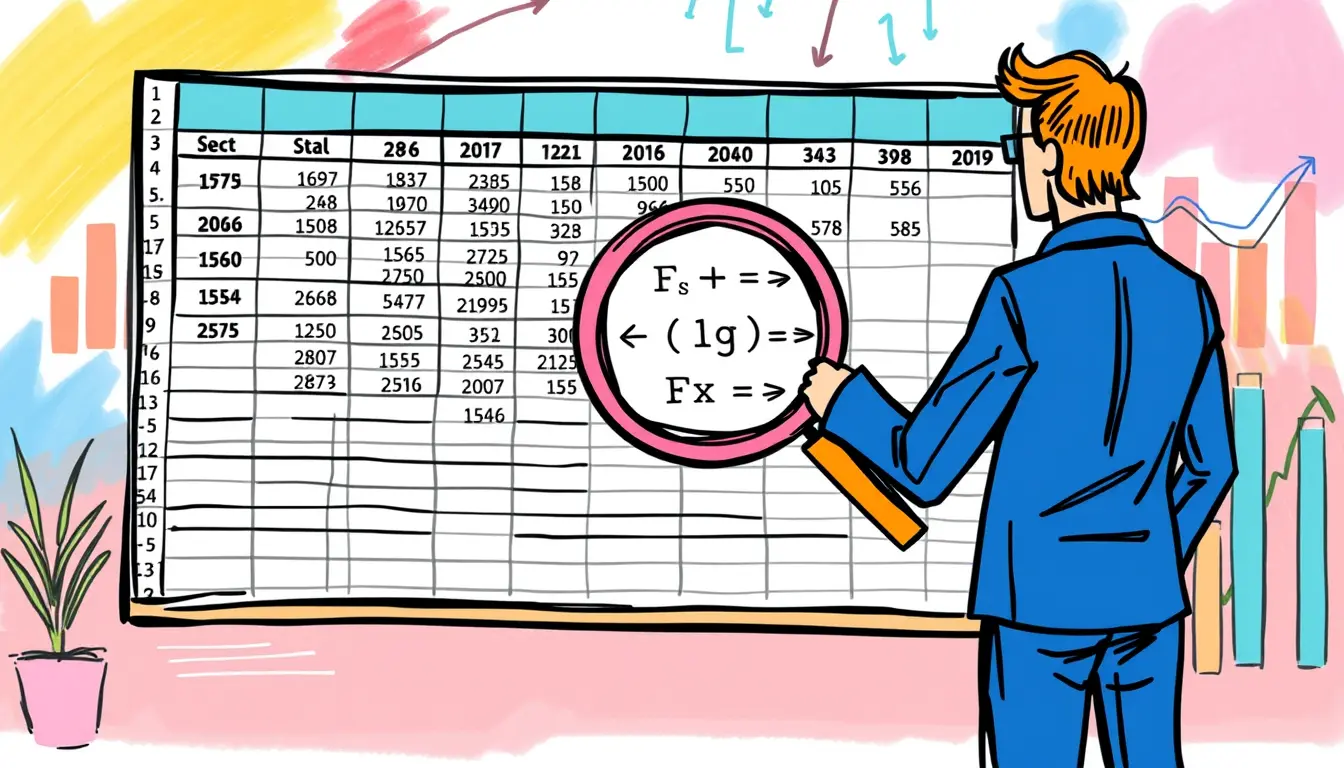Understanding Tree Testing in Enterprise Architecture Visualizations
Tree testing is a method used in the field of enterprise architecture to evaluate the effectiveness and efficiency of information architecture and navigation systems. It involves presenting users with a simplified version of the architecture, typically in the form of a hierarchical tree structure, and asking them to perform specific tasks. By observing how users navigate through the tree and the challenges they encounter, designers and architects can gain valuable insights into the usability of their system.
One of the key advantages of tree testing is that it allows designers to focus specifically on the structure and organization of information, without the distraction of visual design. It enables them to test the logical flow and hierarchy of the information, ensuring that it aligns with user expectations. Tree testing also provides a quantitative measure of the effectiveness of the architecture, allowing designers to identify areas of improvement and refine the overall design.• Tree testing is a method used in enterprise architecture to evaluate information architecture and navigation systems.• It involves presenting users with a simplified version of the architecture in a hierarchical tree structure.• Users are asked to perform specific tasks, allowing designers to observe their navigation and identify challenges.• Tree testing allows designers to focus on the structure and organization of information without visual design distractions.• It helps test the logical flow and hierarchy of information, ensuring alignment with user expectations.• By providing quantitative measures of effectiveness, tree testing identifies areas for improvement and refines overall design.
Common Challenges in Enterprise Architecture Visualizations
In the world of enterprise architecture visualizations, there are several common challenges that organizations often encounter. One such challenge is the overwhelming complexity of information. Enterprise architecture visualizations aim to present the intricate relationships between various components of an organization, but this can sometimes result in an overload of information for users. Navigating through a large number of nodes and links can be daunting, leading to confusion and frustration among users.
Another common challenge involves the lack of user-centric design. While enterprise architecture visualizations are meant to provide valuable insights to stakeholders, they often fail to consider the needs and preferences of the end users. The information presented may not be intuitive or easily understandable, causing users to struggle with interpreting and navigating the visualization. This can hinder effective decision-making and limit the usability of the visualization as a whole.
Benefits of Incorporating Tree Testing in Enterprise Architecture Visualizations
One major benefit of incorporating tree testing in enterprise architecture visualizations is the ability to identify potential flaws in the information architecture and navigation structure of a system. By testing the tree structure and hierarchy of the system, any issues such as confusing labels, hidden or hard-to-reach information, or redundant pathways can be detected and rectified. This ensures that users can easily navigate through the system, find the information they need, and complete their tasks with minimal frustration or confusion.
Another advantage of tree testing is its ability to uncover usability issues early in the design process. By allowing users to interact with a simplified version of the system’s structure, designers can gain valuable insights into areas where users might struggle or become disoriented. This allows for iterative improvements and refinements to the system’s architecture, resulting in a more user-friendly and intuitive experience overall. Additionally, identifying and addressing usability issues early on can save both time and resources by preventing the need for major redesigns or redevelopments later in the project.
Key Principles of Tree Testing in Enterprise Architecture Visualizations
When conducting tree testing in enterprise architecture visualizations, there are several key principles that should be followed to ensure accurate and meaningful results. These principles serve as guidelines to help researchers and designers optimize the effectiveness of their tests.
Firstly, it is crucial to have a clear and well-defined research question or objective before beginning the tree testing process. This will help focus the test and provide a basis for evaluating the results. Secondly, the tree structure should mirror the information architecture of the system being tested. This means that the labels and categories used in the tree should accurately represent the actual navigation structure of the system, providing a realistic testing environment. Additionally, it is important to create realistic tasks that reflect the typical user behavior and goals within the system. These tasks should be carefully crafted to cover different aspects of the system and address potential usability issues. By following these key principles, designers and researchers can obtain valuable insights into the effectiveness of their enterprise architecture visualizations and make informed improvements.
Step-by-Step Guide to Conducting Tree Testing in Enterprise Architecture Visualizations
One of the key steps in conducting tree testing in enterprise architecture visualizations is the creation of a clear and well-structured information architecture. This involves organizing the content into logical categories and hierarchies, ensuring that it aligns with the users’ mental models and expectations. Start by developing a high-level understanding of the architecture, identifying the major sections and sub-sections. Then, create a hierarchical structure by arranging the sections and sub-sections in a logical order. This will form the basis of the tree structure that will be tested.
Once the information architecture is defined, the next step is to design the tree testing scenarios. This involves creating a set of tasks or questions that users will be asked to complete using the tree navigation. The tasks should cover a range of typical user goals and should be carefully designed to ensure that they are clear, specific, and unbiased. Avoid using technical jargon or terminology that may confuse or mislead the users. The goal is to assess the effectiveness of the information architecture and the findability of specific content within it, so the tasks should be designed to test these aspects.
Best Practices for Designing Effective Tree Testing Scenarios
To maximize the effectiveness of tree testing scenarios in enterprise architecture visualizations, it is crucial to follow best practices during the design phase. Firstly, it is essential to clearly define the objectives of the tree test. This includes identifying the specific research questions or tasks that the test aims to address. By having a well-defined objective, designers can create scenarios that accurately reflect the real-world situations that users may encounter when navigating through the architecture visualizations.
Secondly, it is recommended to ensure that the tree structure used in the test closely resembles the actual navigation structure of the enterprise architecture visualizations. This means organizing the tree in a hierarchical manner, with categories and subcategories that mirror the organization of information in the system. A logical and intuitive structure will provide users with a familiar framework and allow designers to evaluate the effectiveness of the information architecture accurately.
By adhering to these best practices, designers can create tree testing scenarios that accurately reflect users’ interactions with enterprise architecture visualizations. This, in turn, will enable organizations to make informed decisions and optimize the design, navigation, and overall user experience of their architecture visualizations.
Analyzing and Interpreting Tree Testing Results in Enterprise Architecture Visualizations
Analyzing the results of tree testing in enterprise architecture visualizations is an essential step in improving the user experience and maximizing the effectiveness of the information architecture. By examining the data collected during the testing process, organizations can gain valuable insights into how users navigate and interact with the visualizations. This analysis enables them to identify patterns, discover potential usability issues, and make informed decisions for optimizing the architecture.
One key aspect of analyzing tree testing results is evaluating the success rate of users’ navigation paths. It is important to determine if the structure of the visualization allows users to easily find the information they are seeking. Analyzing the success rates at different levels of the hierarchy can reveal any shortcomings or inefficiencies in the information architecture. Additionally, examining the paths taken by participants who encountered difficulties in finding specific information can provide valuable insights on where improvements are needed. Through a thorough analysis of the tree testing results, organizations can gain a deeper understanding of the strengths and weaknesses of their enterprise architecture visualizations, allowing them to refine and enhance the user experience.
Addressing Usability Issues Revealed by Tree Testing in Enterprise Architecture Visualizations
Enterprise architecture visualizations play a crucial role in understanding complex systems and aiding decision-making processes. However, the effectiveness of these visualizations heavily relies on their usability. Usability issues can hinder users from efficiently navigating and retrieving information from the visualizations, diminishing their overall value. To address these usability issues, tree testing provides a valuable solution.
Tree testing allows organizations to systematically assess the information architecture of their enterprise architecture visualizations. By presenting users with a simplified tree structure and asking them to locate specific information, tree testing identifies potential navigation problems or areas of confusion. The insights gained from these tests enable organizations to make targeted improvements to the navigation and information architecture of their visualizations, enhancing overall usability. With the results of tree testing, organizations can refine and optimize their visualizations to ensure that users can easily find the information they need without any usability hurdles.
Optimizing Navigation and Information Architecture with Tree Testing in Enterprise Architecture Visualizations
Optimizing navigation and information architecture is crucial in enterprise architecture visualizations. Tree testing, a powerful research method, can be leveraged to enhance these aspects and improve overall user experience. By conducting tree testing, organizations can gain valuable insights into how users navigate through their information architecture and identify any potential usability issues.
When implementing tree testing, it is important to carefully design effective test scenarios. These scenarios should mirror real-world user tasks and align with the organization’s goals. By presenting users with a hierarchical structure of the information architecture and asking them to find specific items or perform certain actions, organizations can assess the efficiency and effectiveness of their navigation system. The results obtained from tree testing can then be analyzed and interpreted to identify any areas for improvement, such as confusing labels or a cumbersome structure. By continuously optimizing the navigation and information architecture based on these test results, organizations can ensure that their enterprise architecture visualizations meet the needs and expectations of their users.
Future Trends in Tree Testing for Continuous Improvement of Enterprise Architecture Visualizations
Tree testing is a valuable technique in enterprise architecture visualizations, and its importance is only expected to grow in the future. As organizations continue to invest in technology and design complex enterprise architectures, the need for effective testing methods becomes even more vital. In the coming years, we can anticipate several trends that will shape the future of tree testing.
One trend that we can expect to see is an increased focus on automation in tree testing. As enterprise architectures become larger and more intricate, manually conducting tree tests can be time-consuming and resource-intensive. Automation tools and algorithms can help streamline the testing process, allowing for quicker and more accurate results. Additionally, advancements in artificial intelligence and machine learning may enable the creation of intelligent tree testing systems that can adapt and learn from previous test results, further improving the efficiency and effectiveness of the testing process.
What is tree testing in enterprise architecture visualizations?
Tree testing is a usability testing method used to evaluate the effectiveness and efficiency of the navigation and information architecture of enterprise architecture visualizations. It involves presenting participants with a hierarchical structure (tree) of topics and tasks, and they are asked to find specific information within the structure.
What are the common challenges faced in enterprise architecture visualizations?
Some common challenges in enterprise architecture visualizations include complex and overwhelming visualizations, poor navigation and information architecture, lack of user understanding and engagement, and difficulty in finding specific information within the visualization.
What are the benefits of incorporating tree testing in enterprise architecture visualizations?
Incorporating tree testing in enterprise architecture visualizations offers several benefits. It helps identify usability issues, improves navigation and information architecture, increases user understanding and engagement, enhances findability of information, and ultimately leads to a better user experience.
What are the key principles of tree testing in enterprise architecture visualizations?
The key principles of tree testing in enterprise architecture visualizations include having a clear and well-organized hierarchical structure, using meaningful and user-friendly labels for topics and tasks, conducting unbiased and representative user testing, and analyzing and interpreting the results objectively.
Can you provide a step-by-step guide to conducting tree testing in enterprise architecture visualizations?
Certainly! The step-by-step guide to conducting tree testing in enterprise architecture visualizations includes preparing a tree structure, recruiting participants, conducting the test session, analyzing the results, and making improvements based on the findings.
What are the best practices for designing effective tree testing scenarios?
Some best practices for designing effective tree testing scenarios include keeping the scenarios realistic and relevant to the users’ tasks, including a mix of easy and challenging tasks, avoiding leading or biased language, and ensuring the scenarios cover a wide range of topics and functionalities within the architecture visualization.
How do you analyze and interpret tree testing results in enterprise architecture visualizations?
To analyze and interpret tree testing results in enterprise architecture visualizations, you can use quantitative measures such as success rates, task completion times, and error rates. Additionally, qualitative feedback from participants can provide valuable insights into their experiences and suggestions for improvement.
How can usability issues revealed by tree testing in enterprise architecture visualizations be addressed?
Usability issues revealed by tree testing can be addressed by making necessary adjustments to the navigation and information architecture. This may involve reorganizing the structure, renaming labels for better clarity, adding additional pathways, or improving the overall user interface based on the specific issues identified.
How can tree testing optimize navigation and information architecture in enterprise architecture visualizations?
Tree testing allows for the optimization of navigation and information architecture in enterprise architecture visualizations by identifying areas of improvement. By analyzing the results and addressing usability issues, the structure and labeling of the visualization can be refined to better meet users’ needs and enhance their ability to find information.
What are the future trends in tree testing for continuous improvement of enterprise architecture visualizations?
Some future trends in tree testing for continuous improvement of enterprise architecture visualizations may include the use of artificial intelligence algorithms to automate the testing process, incorporating eye-tracking technology for more detailed analysis, and integrating real-time user feedback mechanisms to gather insights during the testing phase.














Leave a Reply